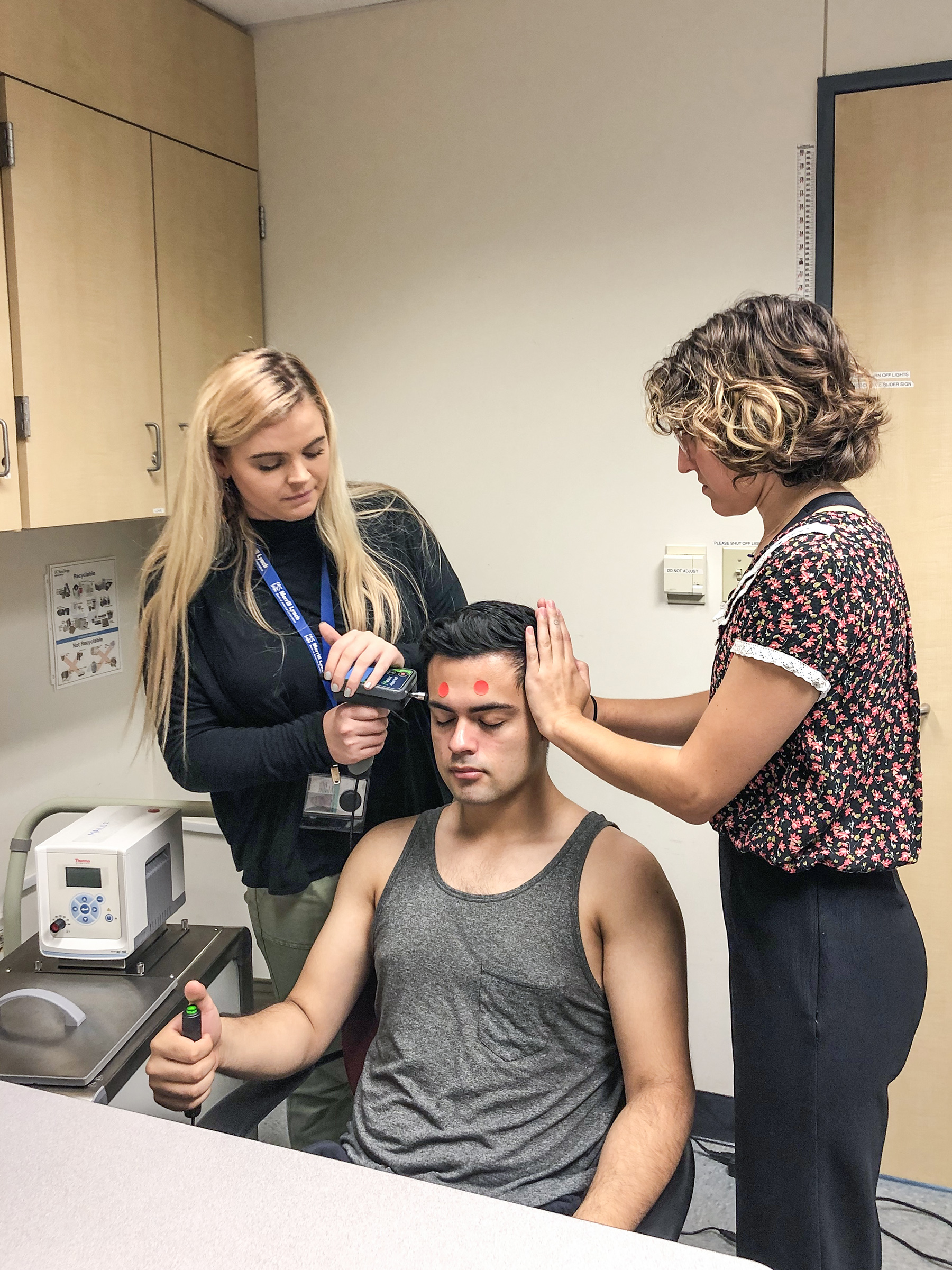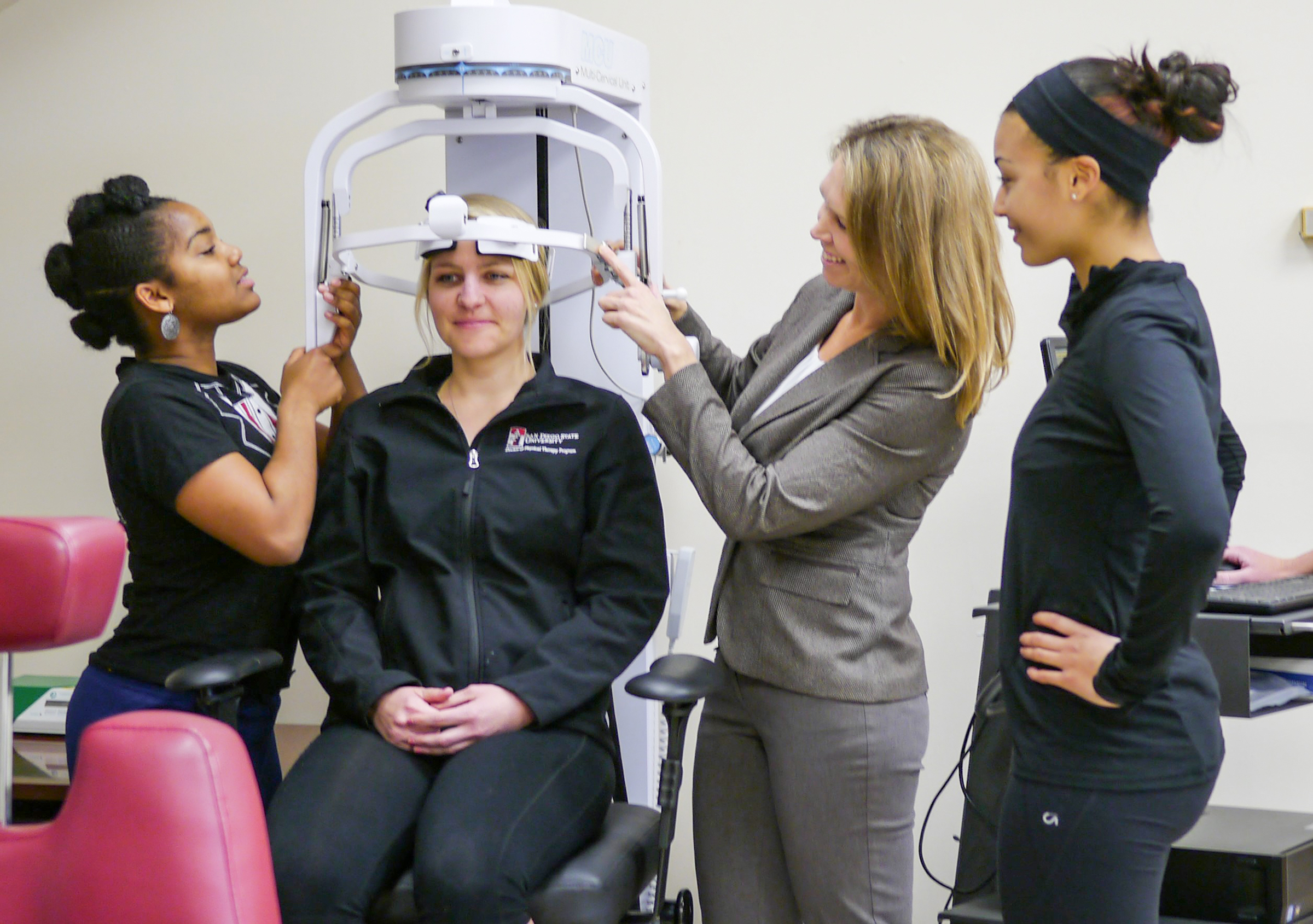Discovering Brain and Muscle Treatment Targets for Post-Traumatic Headache
KATRINA MALUF
Exercise and Nutritional Sciences
Nearly 1.7 million individuals sustain a traumatic brain injury (TBI) requiring medical attention every year in the U.S. Nearly half of those who sustain a TBI report residual disability from post-concussive symptoms that can persist for years after injury. Post-traumatic headache (PTH) is the most common and debilitating of these symptoms.
Dr. Katrina Maluf and colleagues at UCSD and the Veteran’s Administration San Diego
Healthcare System are using advanced quantitative sensory
testing and magnetic resonance imaging techniques to identify brain and muscle biomarkers
of PTH and chronic neck pain in veterans with mild TBI. This work will improve the
diagnosis and treatment of PTH to reduce the burden of chronic pain in military service
members, veterans, athletes, and others impacted by TBI.
This research is supported by the National Institute of Neurological Disorders and Stroke (1R21NS109852-01A1).

Dr. Maluf (left) and research assistant Mike Walsh (right) discuss functional magnetic resonance imaging (fMRI) of the brain and neck.

Research assistants Tiana McMann
(left) and Nicole Whiteley (right)
assess pressure pain thresholds
in the temporalis muscle

Dr. Maluf shows students in the
Doctoral of Physical Therapy Program
how to measure multidirectional neck
strength in the Applied Sensorimotor
Laboratory at SDSU. Photos by UCSD and SDSU labs.
